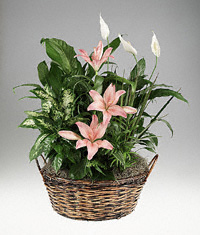1. Single Early
Short-stemmed tulips (usually about 8-inches high) that flower in late March and early April.
2. Double Early
A profusion of petals on 12 to 15 inch stems makes an attractive display when these bulbs are
forced indoors. Although they usually bloom from early to mid-April, they are more delicate than

flowers delivery usa,flowers delivery canada
some other cultivars and need protection from cold and inclement weather.
3. Triumph
A standard since 1923 when they were named by Dutch breeder, N. Zandbergen, these tulips
take the throne at the end of April as they tower to 18 inches high.
4. Darwin Hybrids
One of the tallest garden tulips (usually over 2-feet tall) these red and yellow beauties are
perfect for naturalizing and are those you generally see returning in established gardens May after
May.
5. Single Late
Originally known as Cottage tulips, these hybrids inter-mingled and successfully merged with
Darwin hybrids. Like the Darwins, they grow well over 2-feet tall and bloom in May.
6. Lily-Flowered
Another May-flowering tulip, this group was originally grouped with Cottage tulips but was
reclassified in 1958. On stems that grow from 1 ½ to 2-feet tall, long, shapely flowers have pointed
petals that most closely resemble native Turkish tulips and boast the first scented tulip, the
Ballerina, in their troupe.
7. Fringed
A short (12 to 18 inches) but showy group of tulips that brightens the May garden with ruffles
that either mirror or add a contrasting color to the rest of the bloom.
8. Viridiflora
May blooms with a flash of green streaked through their petals, this group of tulips varies from
one to two-feet tall.
9. Rembrandt
Once highly prized by gardeners, today these tulips are nearly obsolete. Although streaked with
beautiful breaks and stripes of artistic color, it was discovered that this palette was created by a
virus that could spread to other tulip cultivars. Although some suppliers still offer the Rembrandt,
these tulips are no longer commercially grown and advertised types are generally no relation to the
true Rembrandt cultivars.
10. Parrot
A riot of petals that curl in all directions, these blooms look like they could use some preening.
However, they aren’t named for their resemblance to feathers, but rather for the bud that resembles
a parrot’s beak. A few of these May-blooming cultivars are scented. They generally grow from 16 to
24 inches tall.
11. Double Late (Peony Flowered)
Although less resistant to poor weather, peony flowered cultivars are another excellent choice
for container tulip growing. From mid to late May, these tall (1 ½ to 2-feet) blooms bear a profusion
of petals in close resemblance to their namesake.
12. Kaufmanniana
If you have difficulty in pronouncing the name of this group, you can also call its cultivars ‘water
lily tulips’. Opening flat under the mid-March sun, the foliage of these flowers is characterized by
deep purple or brown blotches. Shorter than some other cultivars, the Kaufmanniana is only 6 to 12
inches high. 
13. Fosteriana
Greigii crossed with Kaufmanniana “fostered” this division. From 8 to 18 inches tall, these tulips
add drama to the April garden with foliage that ranges from grey-green to glossy green.
14. Greigii
Another short (8 to 12 inches) addition to the early spring garden (late March to early April),
striking wavy edged foliage provides a perfect backdrop for an eruption of upright blooms that stand
amidst a frame of flared-out petals.
15. Species
The last and the least? This group is truly the dwarf (4 to 12 inches) of the tulip family.
However, they’re easy to naturalize and their cheery blooms repeat year after year anytime from
March to May, some varieties even seeding themselves freely! They are definite proof that good
things come in small packages!
Purchasing & Planting Tulips
A Tulip Catalogue Is the Best Place to Order Tulip Bulbs.
If you’re looking for a great place to get tulip bulbs, a tulip catalogue might be your best bet. A tulip
catalogue helps you to find the tulips that you really want – and those that will look and grow best in
your area.
While your local nurseries or gardening stores might only carry a few dif
tulip varieties, with a tulip catalogue, you should be able to find almost an
color of tulip that you can imagine. From black to white, and almost
everything in between, there are regular solid color tulips, and “bizarre”
that have a mix of several different colors.
A tulip catalogue is also helpful for more than just finding the right tulip bulbs
for you. Some tulip catalogues also offer tips and advice on how to cultivate
the tulips that you order. Also, since there’s generally a small write-up about
all of the different tulip varieties, you should be able to find out the specific
requirements of each cultivar you find.
A tulip catalogue is also useful if you want to get a better idea of what your
tulips will look like in bloom. While most gardening stores offer small pictures
of single cultivars they sell, a tulip catalogue often provides full color pictures
of both single cultivars and tulip garden ideas.
ferent
y
tulips
Planting Tulip Bulbs
Tulips have acclimated to the conditions of their native country. They need the warmth of summer
sun to ripen next year’s flower buds and the cold of winter to rest for their lively emergence in
spring. Although grown in Holland since the late 16th Century, tulips are native to the mountains of
Turkey where the winters are cold, the spring rains are plentiful, and the rest of the year is well…
hot!
Planting tulips is so easy that they are pretty much fool proof if you follow a few simple tips. Growing
tulips is a favorite with gardeners all over the world because of their beauty and simplicity.
The whole purpose of a tulip bulb is to flower. In fact, in the center of each bulb, tiny leaves cradle a
baby bud. The white, onion-like bulb that surrounds the bud stores all the nutrients that the bud
needs to sprout and grow. Once planted, the only real help the tulip needs to grow is a generous
drink of water and some soil to keep it moist.
When the air begins to get cooler, and the leaves start to fall from the trees, most people
immediately think of storing the gardening supplies for the winter and getting ready to bundle up.
But wait! Before packing away your gardening equipment, don’t forget to pick up some tulip bulbs
to plant in your garden.
Purchase your tulip bulbs close to the time that you are ready to plant them. Fall is the perfect time
for planting tulip bulbs, ideally six weeks before the first frost. Once evening temperatures dip to
50°F, it’s time to put them in the ground. In general, unplanted bulbs are difficult to keep over
winter.
When you plant tulips be sure to choose a sunny location. However, since there are no leaves on the
trees when the flowers bloom in the early spring so tree shade is usually not a major issue.
Fall is also the best time to nourish your tulips. Tulips prefer a bed of sandy, slightly alkaline soil
with at least four hours of sunlight per day, but not direct sun. The addition of a little peat moss
loosens compacted garden soil and provides the drainage tulips need. Before you begin planting
bulbs, work nutrient rich compost through your soil. Although bulbs will grow in nearly any type of
soil, the richer your soil is, the bigger your bulb lift will be next summer.
Plant bulbs two to three times the height of the bulb. For clustered displays, plant them closely
together, but not touching. The root side of a bulb is the more rounded side; the pointed side is the
part that will open and sprout foliage and flower. The most important thing to know about planting
tulips is to plant them with the pointy side up. If you plant the tulips upside down, they may still
bloom. However, this will place unnecessary stress on the bulbs.
Container Grown Tulips
Choose your container size according to the height of your cultivar and the density of your bulb
planting. Plant bulbs in a container the same as you would garden-grown tulips, making sure there is
at least ½ inch of soil below the planting.
Use fresh soil-based potting mixtures only. Peat based mixtures may burn the roots of your bulbs
and soilless mixtures dry too quickly.
Plant tulips for indoor forcing in September and October. Place your planted
pots in a cool garden spot (outdoors) and cover them with an inch of clean s
When top growth is about ½ -inch to 1-inch, transfer them indoors to a
darkened area with a maximum temperature of 60F. Let the stems lengthen
for about three weeks and return them to a lighted area with a slightly higher
temperature.
oil.
When putting containers outdoors, protect them from severe frosts,
particularly when combined with penetrating winds. Store your tulip pots in a
cool area like your garage or wrap them with sacking or straw and cover them
with plastic bags until the weather is more tulip-friendly.
It is essential to keep tulip containers sufficiently watered. Unlike garden
grown plants, those in containers cannot seek for water deeper within their
environment. Dry pots result in stunted and shriveled flower heads.
Tulip Care
The best part of growing tulips is watching them dance in the first breaths of spring. The second best
part of growing tulips is tulip care. The reason is because once established, a tulip bed needs very
little care at all!
Tulip bulbs are an excellent nutrient storage system that need little care besides water.
When tulips finish flowering, either snip the stem or deadhead the bloom. However, let the leaves
die naturally. This is the time the bulb absorbs the nutrients it needs for next year’s growth. When
the foliage becomes discolored, remove it to prevent “tulip fire”, which can poison your soil. This is
also a good time to lift any tulip bulbs that you want to remove from your garden.
Lifting bulbs isn’t any more complex than digging them out of the ground or dumping them out of
the pot. Usually each bloom produces one good-sized bulb and two smaller offshoots that can be
discarded. Allow lifted bulbs to dry naturally. Then store them somewhere cool in an airy container
(net produce bags and burlap bags work well) to provide good circulation until next planting time.












